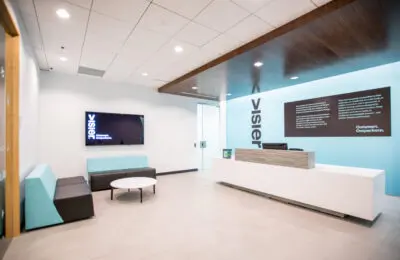Regional Series: North Coast
Bordering the Pacific Ocean, British Columbia’s North Coast region is rich with forests, mountains and rugged coastlines. This is where the breath-taking scenery of the North Coast combines with quality outdoor recreational attractions, a robust transportation hub and deep-water container port in Prince Rupert, an abundance of natural resources, and countless business development opportunities related to ongoing port development and expanding the clean energy, critical minerals and forestry sectors.
Prince Rupert, Terrace and Kitimat are the largest cities in this region. Over 60% of the North Coast’s 56,200 inhabitants are First Nations, the highest percentage of B.C.’s eight regions. The North Coast Region includes the Traditional Territories of the Coast Tsimshian along the Skeena River and its delta, the Haida on Haida Gwaii, the Tlingit along the coast north of Prince Rupert, the Nisga’a in the Nass River Valley and its delta, and the Tahltan along the Stikine River and further inland.
Historically, commercial fishing, forestry and critical minerals have been very important to the economy of the North Coast. The economy has begun to diversify in recent years as a result of new capacity at the Port of Prince Rupert and a rich blend of natural resource and clean tech developments in Terrace, Kitimat and Stewart.
The natural landscapes in the North Coast makes the region popular with those who enjoy spending time outdoors. The pristine wilderness provides a home for many species of wildlife, including grizzly bears, cougars, wolves and salmon. The Kermode bear, also known as the Spirit Bear, is a rare cream-coloured bear found in some areas along the coast. Wildlife viewing tours showing whales, grizzly bears and other fauna at locations like the Khutzeymateen eco reserve are run in the region.

One of the key economic drivers for the North Coast is the Port of Prince Rupert. It is located at the mouth of the majestic Skeena River, and is Canada’s Northern gateway for trade between Asia and North America. Prince Rupert has the world’s second deepest, natural, ice-free harbour and is North America’s closest port to Asia. Already among the fastest growing ports in North America, the anchorage has received more than $300 million in funding from the port authority, the federal government’s National Trade Corridors Fund, CN Rail and Metlakatla Development Corporation (MDC).
The Port of Prince Rupert is creating new opportunities for Canadian importers and exporters with an innovative closed-loop intermodal ecosystem. Enhancements will include a new double-track bridge across the Zanardi Rapids, rehabilitation of an existing single-track bridge, and expansion of a causeway between the bridge and Ridley Island. The improvements will also expand roadways, rail infrastructure and a utility corridor to enable train access for the Ridley Island Export Logistics Platform project. This dedicated road and rail infrastructure is designed to enable new logistics hubs that will offer greater fluidity, efficiency and competitive advantages.

The community of Prince Rupert has a big vision for its growth as part of the Redesign Rupert community planning process and Vision 2030. The city has long been a major force in fishing and seafood harvesting and is now establishing itself as a hot spot for renewable energy, aquaculture, cultural and eco-tourism opportunities. It is ideally situated for wind and tidal power generation and the nutrient rich waters of the North Pacific are a perfect location for shellfish aquaculture. In 2024, renewable energy development company, Hy2gen, signed a lease option agreement for 79 acres on Watson Island to conduct feasibility work on a green energy export project.
Terrace is preparing to take advantage of major developments occurring in critical minerals, clean energy and natural gas. It has become the location of choice for many established businesses and entrepreneurs. Boasting the largest regional population base in this part of the province, Terrace is the service, shopping, educational and medical hub of the region. It is centrally located at the crossroads of three major highways, with proximity to deep water ports, rail service and a bustling airport.
Kitimat is currently in a period of rapid growth, and is connected to global, national and provincial markets through its airport (YXT), railway, highway, private ports and marinas. The area is home to major projects including the Rio Tinto aluminum smelter run on hydroelectric power, LNG Canada’s first LNG export facility and approximately 670 kilometers of the Coastal GasLink pipeline project.

Learn more about these communities and other economic development opportunities and supports from Ecotrust and city economic development organizations like Prince Rupert EcDev, Terrace EcDev, Kitimat EcDev and the Lax Kw’alaams Business Development Lp.
You can also visit our economic regions page or contact us to get in contact with Trade and Invest BC’s regional representative. Stay tuned for future blogs on other regions of British Columbia, or follow us on LinkedIn or X for regular updates.





